Canon EF 70-300 mm f/4-5.6 IS II USM
4. Image resolution
Let’s check how the tested instrument compares – its performance in the frame centre at 70, 135, 200 and 300 mm presents the graph we show below.
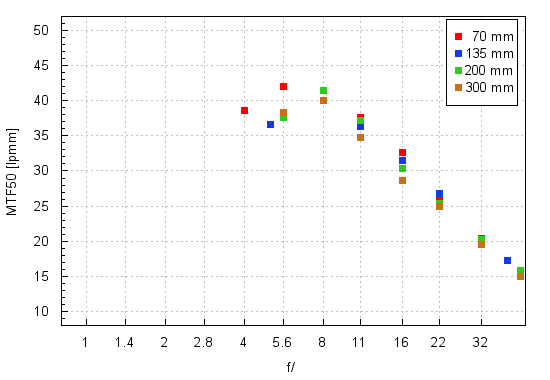
Please Support UsIf you enjoy our reviews and articles, and you want us to continue our work please, support our website by donating through PayPal. The funds are going to be used for paying our editorial team, renting servers, and equipping our testing studio; only that way we will be able to continue providing you interesting content for free. |
- - - - - - - - - - - - - - - - - - - - - - - - - - - - - - - - - - - - - - - - - - - - - - - -
Two very positive things stick out here. Firstly, the performance is very even, without big differences between particular focal lengths. Secondly, already at the maximum relative aperture at every focal length you get images of very good quality. You couldn’t say the same about the performance of the predecessor or some direct rivals of the lens like e.g. the Sigma 70–300 mm f/4–5.6 DG OS. What’s more, results presented here are comparable to, or, momentarily, even a tad better than those of the more expensive L-series device so the Canon EF 70–300 mm f/4–5.6 L IS USM.
Now let’s check how the tested lens fares on the edge of the APS-C sensor – an appropriate graph you see below.
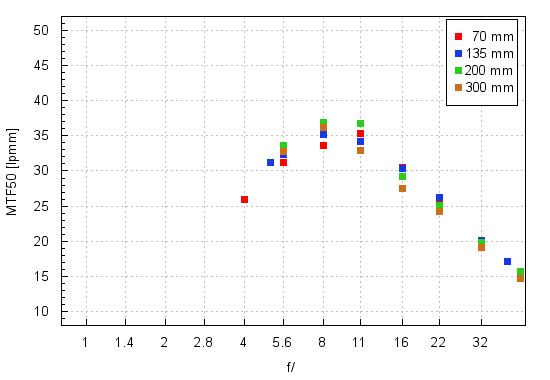
The price which had to be paid for the increase of performance in the frame centre becomes obvious – at the shortest focal length the image quality at the maximum relative aperture is simply weak. Fortunately MTFs reached at other focal lengths don’t provide any reasons for complaining and such a performance is distinctly better than in the one presented by the predecessor. Still it should be mentioned that in this category the more expensive Canon EF 70–300 mm f/4–5.6 L IS USM had no weak points at all.
Another graph presents the performance on the edge of full frame.
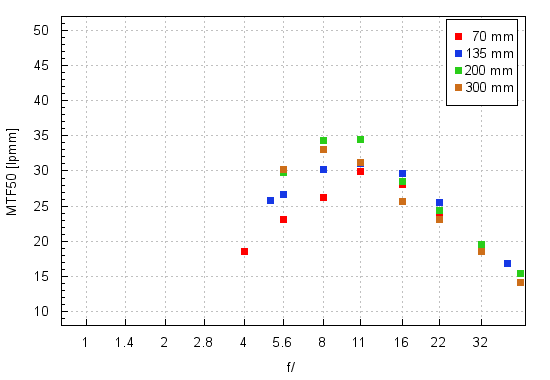
The crisis at 70 mm becomes even more pronounced at that point – so pronounced, in fact, that you have to stop the aperture down to f/11 in order to get useful images. However in the case of the 135 mm focal length you have to stop down just to f/8.0 and two biggest focal lengths fare very nice indeed. Overall it is a performance opposite to that of the more expensive L-series instrument as its longest focal length had most of problems in this category.
To sum up I am very pleasantly surprised. I expected a noticeable improvement but I didn’t think the new Canon would be able to compete on equal terms with the distinctly more expensive and L-series lens, made of better materials.
At the end of this chapter, traditionally, we present crops taken from photos of our resolution testing chart, saved as JPEG files.
| Canon 5D MkIII, JPEG, 70 mm, f/5.6 |
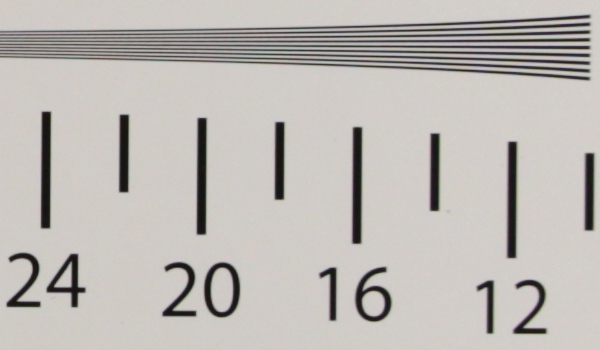 |
| Canon 5D MkIII, JPEG, 135 mm, f/5.0 |
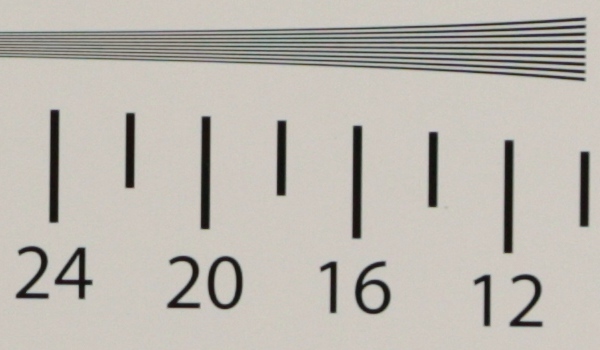 |






